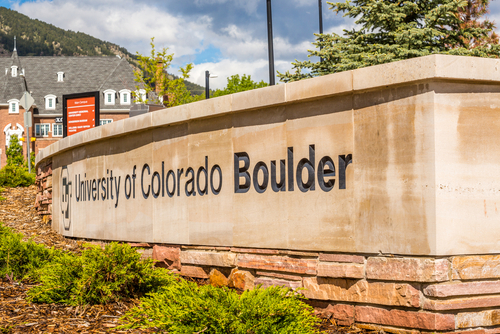The Local newsletter is your free, daily guide to life in Colorado. For locals, by locals.
On Tuesday, February 9, University of Colorado Boulder released the first of two findings from the Fall 2015 Sexual Misconduct Survey. According to the report, 28 percent of undergraduate women have experienced sexual misconduct (defined as sexual assault, sexual exploitation, sexual harassment, intimate partner abuse, or stalking) during their time at CU Boulder. The rate among undergraduate men is six percent.
That incidence falls within the normal range for universities in the United States, says Valerie Simons, CU Boulder’s Title IX coordinator, albeit it is on the higher end of the spectrum. Nationally, 23 percent of undergrad students experience some form of sexual misconduct during their college years.

This was the first survey of its kind conducted at CU Boulder. It’s part of a broader effort to improve the campus climate and procedures around handling sexual misconduct.
In 2007, the university settled a Title IX lawsuit by paying a $2.5-million settlement to former student Lisa Simpson, who alleged she was raped by multiple men at party for CU football recruits. An unnamed student who also alleged she was raped at that party was paid $350,000 by the university in the settlement. The university is currently the subject of ongoing investigation into an alleged Title IX violation that began in 2013, when a student filed a complaint that her rights under Title IX had been violated. Her claim focused on sanctioning procedures for perpetrators.
(Currently, more than 120 higher-education institutions are under federal investigation for Title IX violations; the Constitutional amendment from 1972 prohibits sexual discrimination in an academic environment that receives federal funding. Read more about the law and on-going federal investigations here.)
The 2015 Fall Sexual Misconduct Survey was not part of CU Boulder’s ongoing Title IX investigation. Simons—whose job is to coordinate responses to allegations of sexual misconduct and to help improve the campus climate, policy, and procedures around sexual misconduct—recommended conducting the study to better assess rates of sexual misconduct covered by university policy, and to serve as an educational tool that explains to students what sexual misconduct looks like. “As a best practice, [universities] should be doing a sexual misconduct survey on a regular basis,” Simons says.
Simons adds that she hopes the survey ultimately will lead to higher rates of reporting incidents of sexual misconduct, which she believes are currently underreported. “We’ve had 13,000 students go through various definitions of sexual misconduct, understand what consent is, what it’s not,” she says of the 13,000 survey respondents, which makes up approximately 41 percent of CU Boulder’s current student population. “It’s also a really critical tool for us to evaluate campus support services and reporting processes so we can really understand people’s perceptions and makes improvements and changes.”
Simons says that the school’s policy around sexual misconduct is unlikely to change based on the survey results. The nitty-gritty procedures regarding education and prevention programming, reporting sexual misconduct processes, and holding perpetrators accountable, however, might be changed as a result of the survey’s findings.
The next results report, scheduled to be released in June, will include information about survivors’ thought processes around reporting or not reporting sexual misconduct, accounts of retaliation they experienced, characteristics of incidents such as location and the alleged perpetrators’ affiliation with the university, and a more expansive analysis of graduate student data.
Watch University of Colorado Boulder Chancellor Philip P. DiStefano’s announcement.








